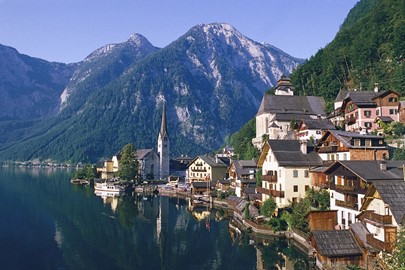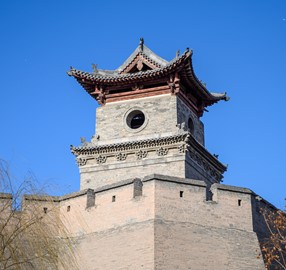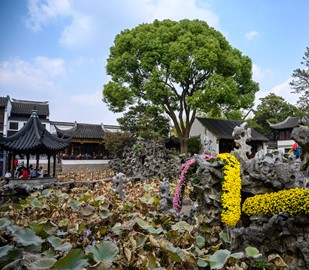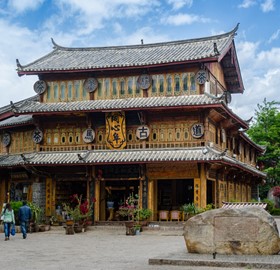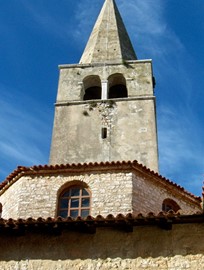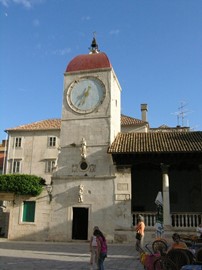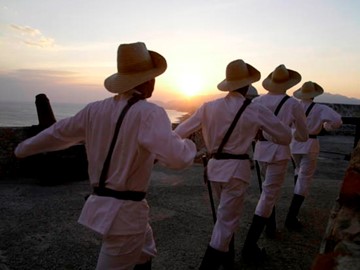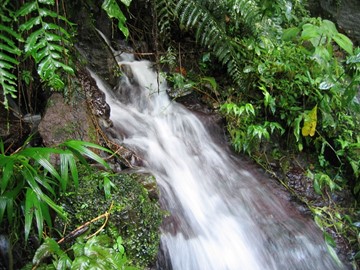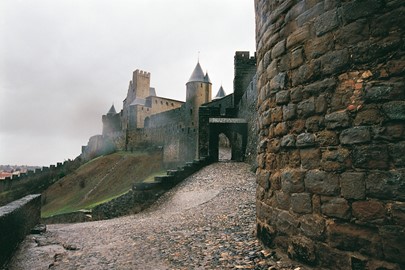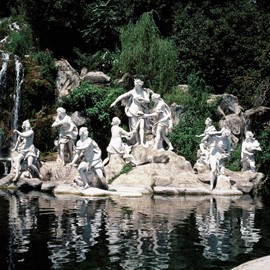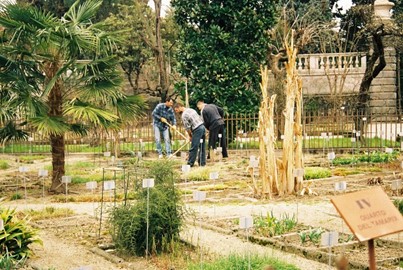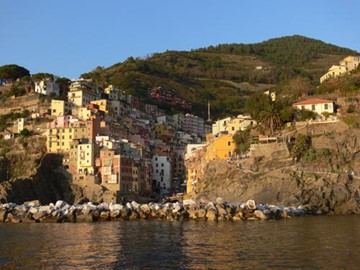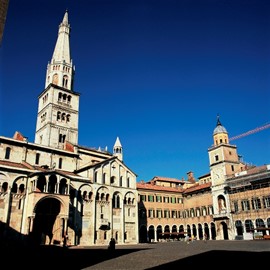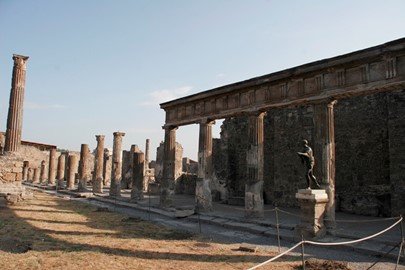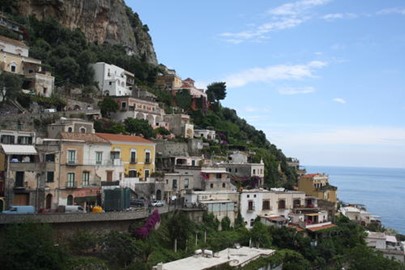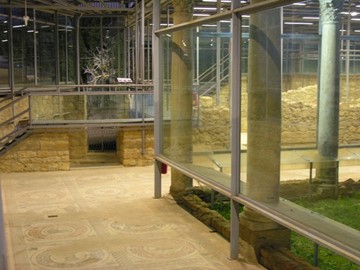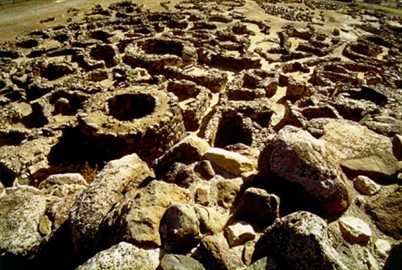year :: 1997
Mont Perdu
Mont Perdu, a UNESCO World Heritage site in France and Spain, recognized in 1997, is a stunning Pyrenees landscape centered on Monte Perdido, blending dramatic limestone peaks, deep canyons, and pastoral valleys. Straddling the border, it features glacial cirques and traditional agro-pastoral systems, reflecting centuries of human interaction with nature. This transnational site showcases the region’s geological and cultural heritage, preserving a rare harmony of rugged wilderness and historical livelihoods... Read More
Heard and McDonald Islands
Heard and McDonald Islands, a UNESCO World Heritage site in Australia, are remote volcanic islands celebrated for their untouched wilderness and geological significance. Dominated by the active Big Ben volcano, Heard Island features rugged peaks, glaciers, and stark lava fields, while McDonald Island remains a pristine haven for wildlife. Home to vast colonies of penguins, seals, and seabirds, these islands boast ecosystems free from human interference. Their raw, dynamic landscapes offer a rare glimpse int... Read More
Macquarie Island
Macquarie Island, a UNESCO World Heritage site in Australia, is a remote sub-Antarctic island prized for its unique geology and abundant wildlife. Formed by the collision of tectonic plates, its rugged terrain features windswept plateaus and steep cliffs. The island teems with massive colonies of penguins, seals, and seabirds, thriving in its pristine, predator-free environment. Its untouched ecosystems and dramatic landscapes offer a rare glimpse into sub-Antarctic biodiversity, making it a vital site for ... Read More
Hallstatt Dachstein and Salzkammergut
Hallstatt-Dachstein and Salzkammergut, a UNESCO World Heritage site in Austria, is a stunning alpine region famed for its picturesque landscapes and cultural heritage. Nestled between dramatic limestone peaks and serene lakes, its quaint villages boast ancient salt-mining traditions and charming wooden architecture. The rugged Dachstein Alps contrast with the tranquil beauty of the Salzkammergut lakes, creating a timeless vista. This harmonious blend of nature and human history makes it a cherished treasure... Read More
The Sundarbans
The Sundarbans, a UNESCO World Heritage site in Bangladesh, is a vast mangrove forest celebrated for its unique ecosystem and biodiversity. This labyrinth of waterways and tidal flats shelters the endangered Bengal tiger, along with diverse wildlife like crocodiles and rare birds. Its dense, salt-tolerant mangroves protect the coast from erosion and cyclones, showcasing nature’s resilience. This pristine wilderness stands as a critical sanctuary for conservation and a striking example of ecological harmony.... Read More
São Luís
São Luís, a UNESCO World Heritage site in Brazil, is a historic colonial city celebrated for its well-preserved Portuguese architecture and cultural richness. Founded in 1612 by the French and later shaped by the Portuguese, its historic center boasts tiled buildings, cobblestone streets, and vibrant traditions like Bumba Meu Boi. Inscribed by UNESCO in 1997, it reflects a unique blend of colonial influences. São Luís stands as a lively symbol of Brazil’s diverse heritage.
Ping Yao
The Ancient City of Ping Yao, a UNESCO World Heritage site in China, is a well-preserved walled city showcasing Ming and Qing dynasty architecture. Its cobblestone streets, traditional courtyard homes, and towering city walls reflect a thriving historical trading hub once central to China’s economy. With ancient banks, shops, and temples still intact, it offers a vivid snapshot of imperial urban life and cultural heritage.
Classical Gardens of Suzhou
The Classical Gardens of Suzhou, a UNESCO World Heritage site in China, are masterpieces of traditional Chinese landscaping, blending art, nature, and architecture. Designed by scholars centuries ago, these serene gardens feature elegant pavilions, winding paths, and tranquil ponds adorned with rockeries and ancient trees. Reflecting philosophical ideals of harmony, they offer a timeless escape and a window into China’s refined cultural past.
Lijiang
The Old Town of Lijiang, a UNESCO World Heritage site in China, is a charming maze of cobblestone streets, wooden homes, and ancient canals reflecting Naxi minority culture. Built over 800 years ago, it features traditional architecture and a serene ambiance, set against a mountainous backdrop. This well-preserved town offers a window into historical trade routes and ethnic heritage.
Cocos Island
Cocos Island, a UNESCO World Heritage site in Costa Rica, is a pristine marine and terrestrial ecosystem renowned for its exceptional biodiversity. Located in the Pacific Ocean, it hosts a variety of endemic species, vibrant coral reefs, and large populations of marine life, including sharks, rays, and dolphins. The island’s rugged, uninhabited terrain and surrounding waters make it a critical conservation area and a top destination for scientific research and eco-tourism. Its isolation has preserved its na... Read More
Euphrasian Basilica Porec
The Euphrasian Basilica in Poreč, Croatia, is a UNESCO World Heritage Site renowned for its exceptional early Byzantine architecture and stunning 6th-century mosaics. Built in the mid-6th century under Bishop Euphrasius, the complex includes a basilica, atrium, baptistery, and episcopal palace, showcasing a blend of classical and Byzantine styles. Its well-preserved mosaics, depicting religious scenes and figures like Bishop Euphrasius himself, highlight its historical and artistic significance, earning it ... Read More
Trogir
Trogir, a UNESCO World Heritage site in Croatia, is a historic coastal town renowned for its well-preserved medieval architecture. Founded by Greeks in the 3rd century BC, it features a stunning blend of Romanesque, Gothic, and Renaissance buildings, including the prominent Cathedral of St. Lawrence. Its charming stone streets and picturesque waterfront reflect centuries of cultural influences, making it a captivating destination for history and architecture enthusiasts.
San Pedro de la Roca Castle
San Pedro de la Roca Castle, a UNESCO World Heritage site in Cuba, is a well-preserved 17th-century fortress designed by Italian engineer Giovanni Battista Antonelli. Constructed between 1638 and 1700, it served as a strategic defense against pirate attacks and foreign invasions, showcasing a blend of military architecture and historical significance. The castle features robust stone walls, multiple levels, and artillery platforms, reflecting its role in protecting the island's southeastern coast. Today, it... Read More
Morne Trois Pitons
Morne Trois Pitons National Park, a UNESCO World Heritage site in Dominica, is renowned for its volcanic landscapes and rich biodiversity. The park features dramatic geothermal attractions like boiling lakes, hot springs, and fumaroles, alongside lush rainforests teeming with rare flora and fauna. Visitors can explore scenic trails leading to stunning waterfalls and panoramic vistas, offering a glimpse into the island’s natural splendor. This protected area stands as a testament to Dominica’s unique geologi... Read More
Tallinn
Tallinn, a UNESCO World Heritage site in Estonia, is a remarkably preserved medieval city known for its historic charm. Its Old Town features cobblestone streets, Gothic architecture, and landmarks like St. Olaf’s Church and the Alexander Nevsky Cathedral. The city's well-maintained defensive walls and towers reflect its past as a key trading hub in Northern Europe. Today, Tallinn blends its rich history with a vibrant modern culture, attracting visitors worldwide.
Fortified City of Carcassonne
The Fortified City of Carcassonne, a UNESCO World Heritage site in France, is a remarkably preserved medieval fortress dating back to the 13th century. Its imposing stone walls, towers, and drawbridges showcase a blend of Roman and Gothic architecture, offering a glimpse into Europe’s feudal past. The site includes the Château Comtal, a castle within the city, and the Basilica of Saint-Nazaire, known for its stunning stained-glass windows. Today, it stands as a testament to historical engineering and attrac... Read More
Royal Palace at Caserta
The Royal Palace at Caserta, a UNESCO World Heritage site in Italy, is an opulent 18th-century Baroque residence built for the Bourbon kings of Naples. Renowned for its grand architecture, the palace boasts a vast layout with lavish interiors, including the ornate Throne Room, and is complemented by an expansive park featuring intricate fountains and cascading waterworks. This masterpiece exemplifies the era's royal splendor and innovative landscape design.
Botanical Garden, Padua
The Botanical Garden in Padua, a UNESCO World Heritage site in Italy, is renowned as the world’s oldest university botanical garden, established in 1545. It features a historic circular layout with diverse plant collections, including rare and medicinal species, housed in elegant greenhouses and open beds. This living museum highlights centuries of botanical research and education, reflecting its enduring scientific and cultural legacy.
Cinque Terre
Cinque Terre, a UNESCO World Heritage site in Italy, is renowned for its picturesque coastal villages perched along rugged cliffs overlooking the Ligurian Sea. This cultural landscape features colorful houses, terraced vineyards, and olive groves, shaped by centuries of human effort to cultivate steep terrain. Connected by scenic trails and a historic railway, it exemplifies a harmonious blend of nature and traditional Mediterranean life.
Modena
Modena, a UNESCO World Heritage site in Italy, is renowned for its Romanesque cathedral, Torre Civica, and Piazza Grande, which together exemplify medieval architecture and urban planning. The 12th-century Duomo, with its intricate stone carvings, stands as a testament to the city’s historical and artistic legacy. This well-preserved ensemble highlights Modena’s cultural importance and its role as a center of civic life in the Emilia-Romagna region.
Pompei
The UNESCO World Heritage site encompassing Pompeii, Herculaneum, and Torre Annunziata in Italy preserves an extraordinary snapshot of ancient Roman life, frozen in time by the eruption of Mount Vesuvius in 79 AD. Pompeii and Herculaneum, buried under volcanic ash and pumice, reveal remarkably intact urban centers with frescoed villas, public baths, and amphitheaters, showcasing Roman architecture and daily life. Nearby Torre Annunziata complements these sites with its own archaeological treasures, includin... Read More
Costiera Amalfitana
Costiera Amalfitana, a UNESCO World Heritage site in Italy, is a stunning coastal region renowned for its dramatic cliffs, vibrant Mediterranean villages, and terraced vineyards cascading toward the sea. This picturesque landscape features historic towns like Amalfi and Positano, with their colorful architecture and medieval charm, seamlessly blending natural beauty and cultural heritage. Recognized for its unique scenery and traditional land use, it exemplifies centuries of human harmony with a rugged envi... Read More
Agrigento
Agrigento, a UNESCO World Heritage site in Italy, is renowned for its exceptionally preserved ancient Greek temples, part of the Valley of the Temples. This archaeological treasure showcases Doric architecture from the 5th century BC, including the iconic Temple of Concordia, set against a picturesque Mediterranean backdrop. The site highlights the cultural and historical legacy of Magna Graecia, reflecting the sophistication of ancient Greek civilization in Sicily.
Villa Romana del Casale
Villa Romana del Casale, a UNESCO World Heritage site in Italy, is a luxurious Roman villa renowned for its extensive and well-preserved mosaic floors. Dating to the 4th century AD, this grand estate features intricate artwork depicting mythological scenes, hunting expeditions, and daily life, showcasing exceptional Roman craftsmanship. The villa’s elaborate design, including bath complexes and courtyards, highlights its historical significance as a testament to the wealth and culture of the late Roman Empi... Read More
Su Nuraxi di Barumini
Su Nuraxi di Barumini, a UNESCO World Heritage site in Italy, is a striking example of a Bronze Age nuraghe, a unique type of stone tower built by the Nuragic civilization. This well-preserved complex features a central conical tower surrounded by smaller structures and a village, showcasing ancient engineering and defensive architecture. Recognized for its historical and archaeological value, it offers insight into the prehistoric cultures of the Mediterranean.



